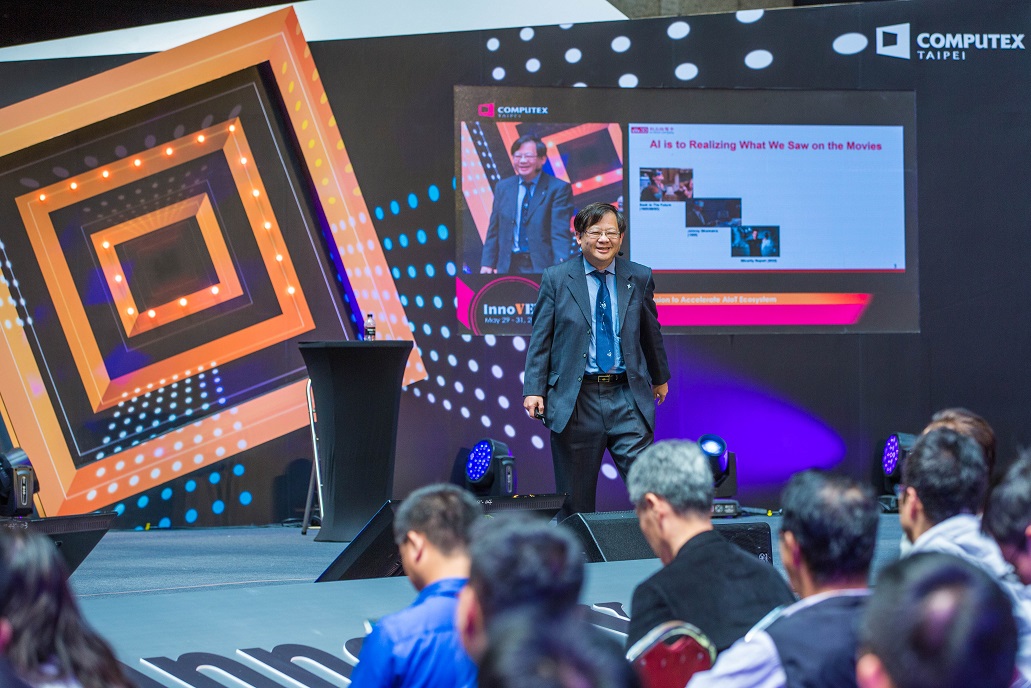
One of the speakers of the AI forum in InnoVEX is Mr. Limas Lin, Vice President of Etron. In his keynote speech, he shared how better and more sophisticated sensors will greatly improve AI.
Movie to Reality
Mr. Lin started that to enhance AI with sensor technology, there needs to be a transition from the conventional 2D sensors to 3D sensing technologies. He believes this sensor fusion that combines different sensors will be able to improve the performance of AI systems. This boost in performance is necessary as many people have high hopes of what AI can do or achieve. With many science fiction media that show a combination of AI and other technologies, achieving what was shown there is certainly a goal for many developers.
It is important to note that AI is a big superset of machine learning and deep learning. In essence, anything that mimics a human being’s behavior can be considered AI. Just like humans, AI can learn & improve on specific skills through machine learning and when that process is repeated over and over, it becomes deep learning.
Currently, AI is a fast growing global market with the global value of AI software market expected to grow from USD 8.1 Billion in 2018 to USD 105.8 Billion in 2025. The top 5 industries where AI applications are expected to grow are: telecommunications, consumer market, advertising, business services, and healthcare.
Great Sensors for Big Data
One of the reasons for AI’s necessity is for processing big data and one of the most necessary objects to obtain it is sensor. Sensors such as depth camera modules, accelerometer, thermometer, etc. are equivalent to the human senses and more forms of them are created to collect more data. The feedback loop that will pass through the system will be: sensing, thinking, processing, and finally reacting.
Specifically for visual sensors, there is a trend of migration from 2D sensors to 3D sensors fusion; cameras with stereoscopy to allow depth perception. The future camera modules will include more cameras combined with other sensors such as IMU (inertial measurement unit), audio, temperature, etc. to enable it to collect more information and process through the AI.
3D sensing is another growing market. 3D sensing technology combined with AI/ ML is growing fast with 44% CAGR with its value expected to reach USD 19 Billion in 2023. The main industries that need the technologies are AR/VR, facial recognition, gaming, robotics, autonomous guided vehicle, etc. The consumer 3D imaging & sensing industry is expected to reach USD 14 Billion in 2023; a huge and available market for everyone.
Robots, Robots, and More Robots
Robotics has grown significantly over the years, with many works that were could only be done manually or semi-manually can now be done by specific use robots. In the future, general use robots can take over the functions of multiple specific use robots or even some tasks that even now are done by humans. Future warehouses might even forego with human presence and have a great majority of the tasks automated. To achieve this future, better sensors will be necessary. Silicones can be used to create a variety of camera modules because customization becomes possible to fulfill the different demands and requests of the customers.
AI Needs Everyone
A single company cannot do everything needed to achieve a serviceable level of general use robots; they would need to collect other companies to join and collaborate. Middleware and software companies will also need to support the system structure or platform while the sensor fusion will need to support the AIoT ecosystem and make it happen faster.
Mr. Lin concluded his keynote speech by stating his main belief of the purpose of AI: to Educate the Young and to Care for the Old.
To watch the full forum session, visit our YouTube channel here.